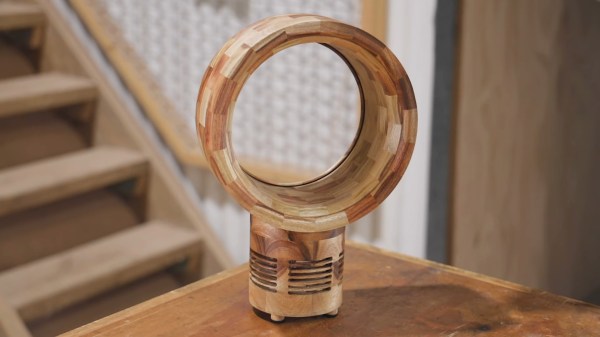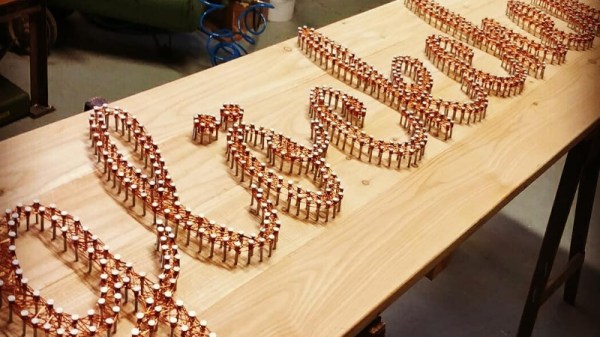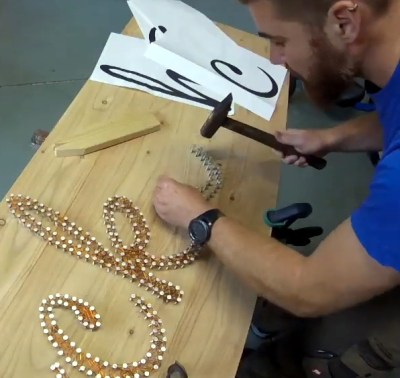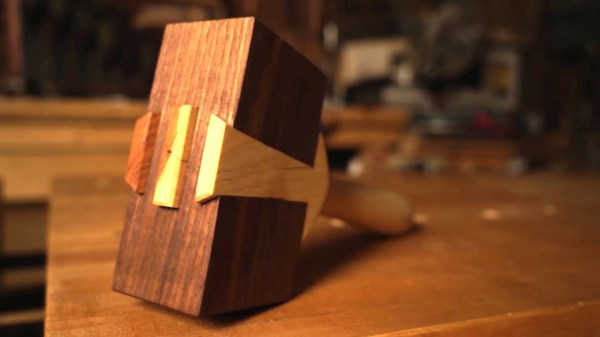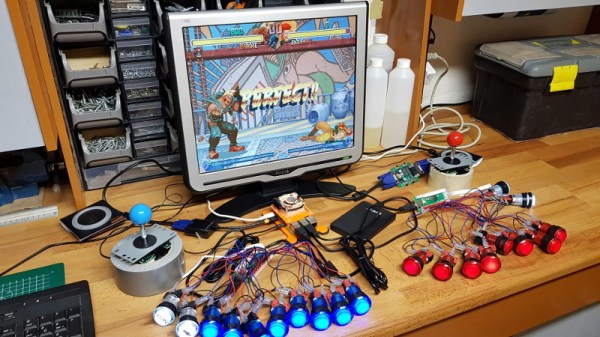It’s a simple enough premise: to make a Dyson-style bladeless fan out of wood. The execution of the finished fan, done and filmed by [Neil] from Pask Makes on YouTube, is however spectacular. Using nothing but scrap wood from a chopping board business local to him, he’s made the entire body of the fan using some interesting fabrication methods.
To plan the circular design of the body, [Neil] used an online calculator to measure the specific cuts of wood he needed in order to form cylinders out of trapezoidal sections glued together. Once the rough shape is made, he then used a profile template to turn the air channel with precision out of the two main parts of the fan body. Then, he uses SketchUp in order to figure out what shape needs to be cut from the base in order for the top to fit on it. From there, it’s just a matter of drilling out slots for the air intake, which he does so with an ingenious custom jig, and fitting the internals of a standard fan into the new wooden body.
The video, which you should definitely watch after the break if you have a spare half hour, might not be detailed enough to be used as a tutorial, but it certainly outlines his methods and the tools used well enough to impress us. And the finished build is beautiful to look at, too! If you’re looking for more impressive woodworking, we’ve covered this gorgeous recreation of a Commodore 64 case in wood. But if the hand-built nature of that doesn’t satisfy you, here’s a professional-looking custom caliper case made with CNC and laser engraving.

